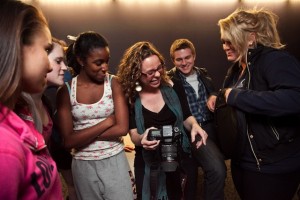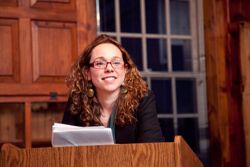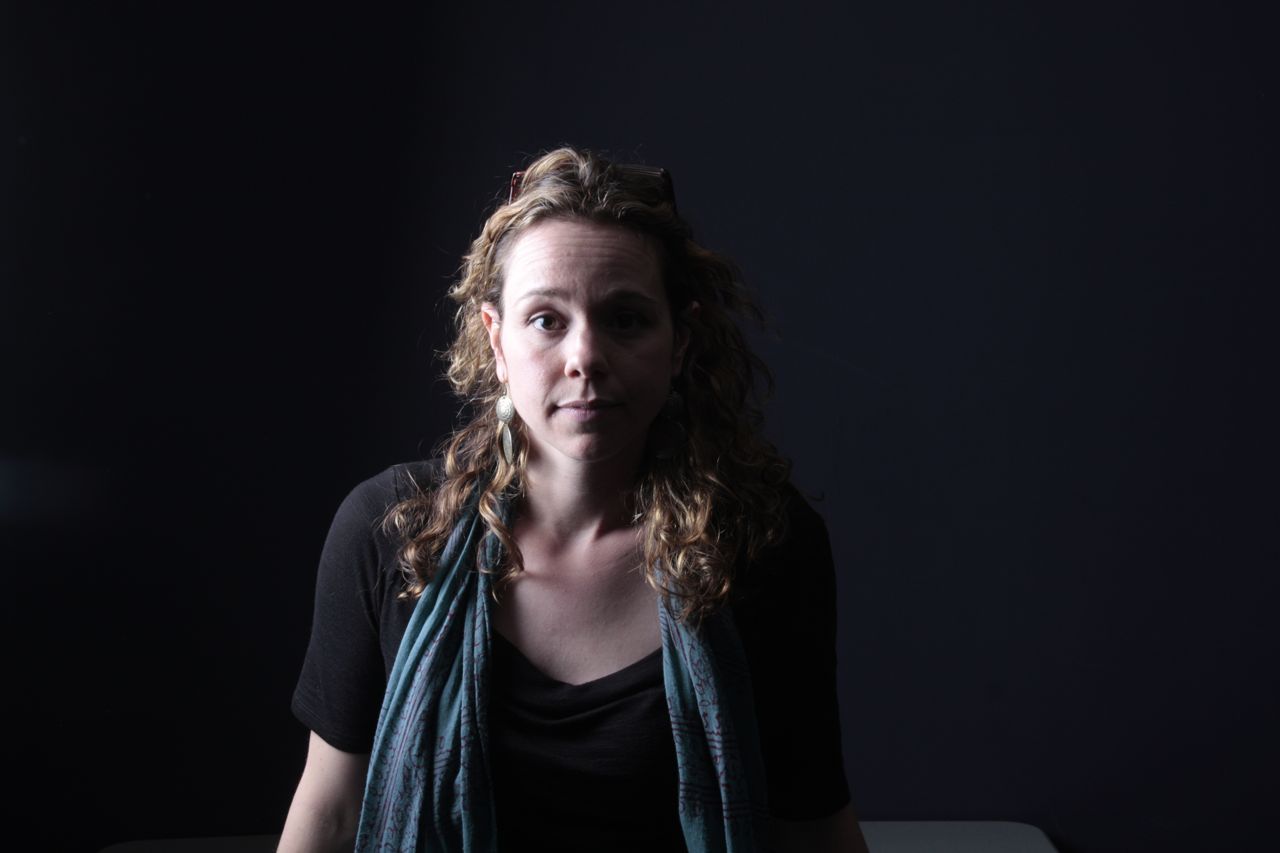Susan Falzone led a procession of Williston Northampton photography students into the lower floor of the Reed Campus Center. She picked the dimmest corner she could find to set up the equipment: a softbox flash and a white and gold reflector.
 “Lift it up, down, use the fill, don’t use the fill,” Falzone said, adjusting the reflector and the light. “Just experiment a little bit.”
“Lift it up, down, use the fill, don’t use the fill,” Falzone said, adjusting the reflector and the light. “Just experiment a little bit.”
Falzone, a documentary and portrait photographer based in New York City, was on campus for Williston Northampton’s ongoing Photographers’ Lecture Series and for some one-on-one time with students.
In her work, Falzone combines documentary photography with a close examination of social issues to produce such diverse pieces as a series of intimate portraits of people living without health care to a series on her aunt’s struggle with dementia.
Falzone would touch upon these difficult subjects during her evening lecture, explaining that her interest had stemmed among her own personal experiences, such as not having health care growing up.
“Every time we went to the doctors or had our teeth cleaned, or any of those things, we knew the cost associated with it,” she said. “It’s something that stuck with me and is important in my work today.”
Her portraits of those without health care, not only included a man named James, who was denied coverage because he had diabetes; and Andy, who had been uninsured since losing his job as a mechanic in 2009; but a photo of Falzone herself, seated on a bed.
“I’ve been uninsured since 2008, when I left a full-time job to go back to school,” Falzone said.
That a photographer could step in front of the camera, as well as stand behind it, was a point Falzone also made during the afternoon she spent with students. She worked with the budding photographers on creating portraits with light and shadow using equipment she brought along.
“You guys should all switch up and model for one another,” Falzone said, stepping in front of the camera to test a setting. When the picture appeared a bit blown out, she added, “This looks a little hot—hot meaning too much light.”
By using hard light, the students found they could make each other look like vampires (“Like Twilight!” said one) or movie villains. Soft lighting produced a dreamy Rembrandt-quality and smoothed facial lines. By flipping the reflector from white to gold, the students saw how the flash would bounce off the backgrounds; adjusting the softbox let them capture specific facial features.
“I’m such a visual person,” Falzone said. “I could show light and shadow all day through pictures. Until I actually do it, I can’t get it—I couldn’t imagine they could, either.”
As Falzone was demonstrating still techniques, fine arts teacher and film club advisor Ed Hing oversaw experiments with portraits in motion. Students threw balloons, ran up and down stairs, jumped in the air, and posed against a low wall, while their peers tried out shutter speeds and flash angles.
“I think it’s good to actually get involved with what we’re learning about,” said Olivia Milne ’14, who had been both subject and photographer. “It’s easier to learn if it’s tangible, instead of listening to a lecture. I think it’s good to have a balance of both.”


